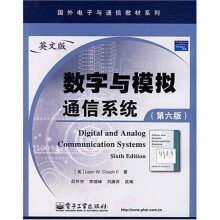LIST OF SYMBOLS
1 Introduction
1-1 Historical Perspective
1-2 Digital and Analog Sources and Systems
1-3 Deterministic and Random Waveforms
1-4 Organization of the Book
1-5 Use of a Personal Computer and MATLAB
1-6 Block Diagram of a Communication System
1-7 Frequency Allocations
1-8 Propagation of Electromagnetic Waves
1-9 Information Measure
1-10 Channel Capacity and Ideal Communication Systems
1-11 Coding
1-12 Preview
1-13 Study-Aid Examples
2 SIGNALS AND SPECTRA
2-1 Properties of Signals and Noise
2-2 Fourier Transform and Spectra
2-3 Power Spectral Density and Autocorrelation Function
2-4 Orthogonal Series Representation of Signals and Noise
2-5 Fourier Series
2-6 Review of Linear Systems
2-7 Bandlimited Signals and Noise
2-8 Discrete Fourier Transform
2-9 Bandwidth of Signals
2-10 Summary
2-11 Study-Aid Examples
3 BASEBAND PULSE AND DIGITAL SIGNALING
4 BANDPASS SIGNALING PRINCIPLES AND CIRCUITS
5 AM,FM,AND DIGTAL MODULATED SYSTEMS
6 RANDOM PROCESSES AND SPECTRAL ANALYSIS
7 PERFORMANCE OF COMMUNICATION SYSTEMS CORRUPTED BY NOISE
APPENDIX A MATHEMATICAL TECHNIQUES,IDENTITIES,AND TABLES
APPENDIX B PROBABILITY AND RANDOM VARIABLES
APPENDIX C STANDARDS AND TERMINOLOGY FOR COMPUTER COMMUNICATIONS
APPENDIX D USING MATLAB
REFERENCES
ANSWERS TO SELECTED PROBLEMS
FRONTENDPAPERS
BACK ENDPAPERS

 缺书网
缺书网 扫码进群
扫码进群





